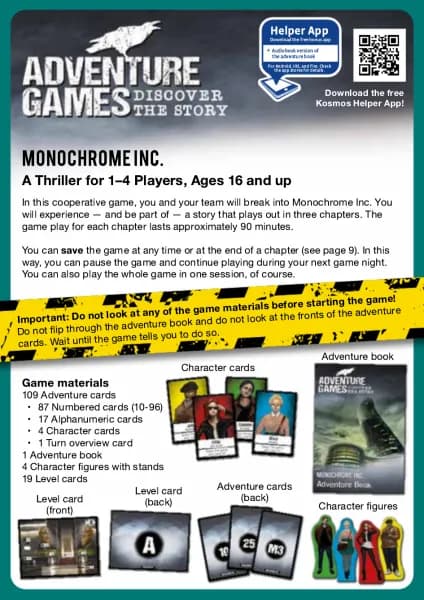Thames & Kosmos Rock Tumbler handleiding
Handleiding
Je bekijkt pagina 5 van 6

5
CREATE ACCESSORIES
PICKING ROCKS
WHAT’S HAPPENING?
WHAT ELSE CAN YOU TUMBLE?
Create fun trinkets with the polished
rocks using the included accessory
attachments!
1. To create a necklace or keychain,
insert the desired rock into the metal
cages.
2. Use hot glue or an all-purpose
adhesive to secure a polished rock to
the ring or earring attachments. Ask
an adult for help when using the hot
glue gun.
Not all rocks are suitable candidates for tumbling! Here are some things to look out for
when choosing a good rock for tumbling:
1. Hardness is one of the most important properties to keep in mind. The hardness of
a rock is a measure of how much it can resist being scratched. German mineralogist
Freidrich Mohs developed the Mohs scale of hardness that is used to determine the
relative hardness of rocks and minerals. The best rocks to use for anyone new to rock
tumbling are ones that have a Mohs hardness of about 7.
2. The rock should have little to no cracks, pores, or abrasions. These can collect grit
when tumbling the rocks and, if not cleaned thoroughly, can scratch other rocks and
prevent a good polish.
3. The rock should not have fractures. The fractures can make the rock weaker during
tumbling, causing it to break apart instead of getting smoother.
In the process of rock tumbling, you are using tiny,
abrasive grit particles to repeatedly smooth out the
surface of rough rocks over a period of time, thus turning
them into beautiful, polished stones. The grit works like
sandpaper: when the hard, sharp grit particle hits the
surface of the rock, it chips off a small amount of the
rock. The higher the grit number (e.g., 60, 120, 220), the
smaller the grit particles. The smaller the particle, the
smaller the portion of rock that gets chipped off, and thus
the smoother the surface becomes. This process is called
abrasion and it is part of the larger natural process of
weathering, which is the breaking down or dissolving of rocks and minerals on Earth’s surface.
You have probably picked up a smooth rock at a beach or by a river. These are rocks that have
been tumbled by the force of water over millions of years!
If you try tumbling unusual materials, it’s best to experiment in small batches with
different grits and tumbling times to understand how each material reacts.
1. Shells and Coral: They can get smooth but may lose their natural patterns and colors.
Softer shells may break easily and porous coral may wear down quickly.
2. Coins: They can get shiny but may lose details. Be careful not to tumble rare or
valuable ones!
3. Wood: It smooths out but doesn’t get shiny. Try tumbling dry with fine grit instead of
water. Avoid soft woods; hardwoods (like oak or walnut) can hold up better.
4. Marbles: They can get cloudy or shiny, like sea glass, depending on the grit. You can
use a special polish to make them clear again.
1 2 3 4 5 6 7 8 9 10
Gypsum
Talc
Fluorite Feldspar Topaz
Calcite Apatite
Minerals
Increasing Mohs Hardness
Quartz
Corundum
Diamond
Bekijk gratis de handleiding van Thames & Kosmos Rock Tumbler, stel vragen en lees de antwoorden op veelvoorkomende problemen, of gebruik onze assistent om sneller informatie in de handleiding te vinden of uitleg te krijgen over specifieke functies.
Productinformatie
| Merk | Thames & Kosmos |
| Model | Rock Tumbler |
| Categorie | Niet gecategoriseerd |
| Taal | Nederlands |
| Grootte | 1554 MB |







